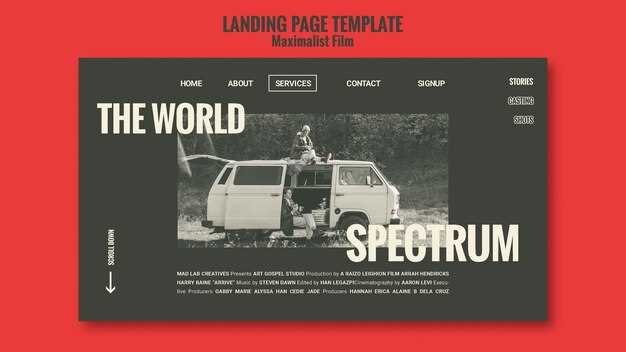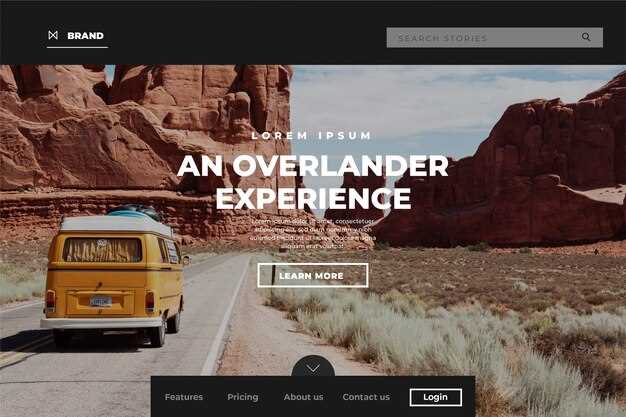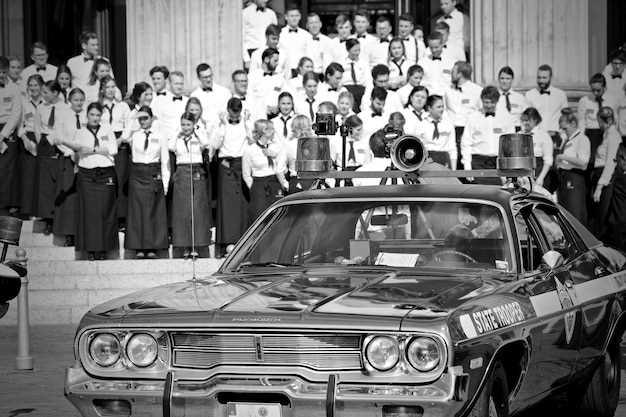
In today’s digital age, a well-designed website serves as the backbone of any community, and for classic car enthusiasts, it offers a vital space to connect and share their passion. Building a dedicated page for your classic car community can enhance communication among members, provide valuable resources, and promote events and gatherings.
The benefits of having a structured website extend beyond mere aesthetics. It allows for easy organization of information, such as forums for discussion, galleries showcasing members’ cars, and sections for resources like repair tips or parts sourcing. By creating a centralized location, members can always find what they need, fostering a sense of belonging and participation.
Moreover, an engaging and user-friendly website can attract new enthusiasts to your community. Utilizing social media links, blog posts, and newsletters can keep both current and prospective members informed and involved. Ultimately, a well-crafted page not only celebrates the beauty of classic cars but also builds lasting connections among those who share the same love for automotive history.
Choosing the Right Platform for Your Classic Car Website

Selecting the appropriate platform for your classic car website is crucial for building an engaging online community. A well-chosen platform not only enhances user experience but also supports the growth and connectivity of your audience. Here are key factors to consider when making your choice:
- User-Friendly Interface: Look for platforms that offer intuitive navigation and easy page management. A user-friendly interface allows you to update content efficiently and ensures that your community members can easily find information.
- Customization Options: Choose a platform that allows for extensive customization. This flexibility enables you to create a unique look and feel that reflects the personality of your classic car community.
- Responsive Design: Ensure that the platform supports responsive design. A mobile-friendly website is essential since many users will access your page on their smartphones and tablets.
- Community Features: Look for platforms that offer built-in community features such as forums, member profiles, and comment sections. These features foster interaction and help establish a sense of belonging among users.
- SEO Tools: Effective search engine optimization (SEO) tools are important. A platform with strong SEO capabilities will help your website rank higher in search results, attracting more car enthusiasts to your community.
- Content Management System (CMS): Consider platforms that provide a robust content management system. A good CMS will make it easier to publish articles, manage galleries of classic cars, and keep your community updated with news and events.
- Integration with Social Media: Choose a platform that allows easy integration with social media channels. This will enable you to promote your page and engage with a wider audience, driving traffic to your classic car website.
- Cost and Scalability: Evaluate the pricing models of various platforms. Ensure that you choose one that fits your budget while also being scalable to accommodate your community’s growth.
By considering these factors, you will be better equipped to select a platform that not only meets your needs but also helps cultivate a vibrant classic car community on your website.
Designing Engaging Content for Your Classic Car Community Page
Creating a captivating page for your classic car community requires thoughtful planning and creativity. The content should resonate with enthusiasts and foster a sense of belonging among members. Here are key elements to consider when designing engaging content.
Visual Appeal: Use high-quality images of classic cars to draw attention. A distinctive layout that highlights vehicles can captivate viewers. Incorporating galleries or slideshows showcasing members’ cars can enhance interaction and encourage contributions from the community.
Informative Articles: Write informative content that covers various aspects of classic cars, such as restoration tips, historical significance, and maintenance advice. Articles should be well-researched and include hyperlinks to reputable sources for further reading. This not only educates but also engages members by providing valuable insights.
Interactive Elements: Include forums or discussion boards where community members can share their experiences, ask questions, and collaborate. Polls or surveys on topics like favorite car brands or restoration challenges can spark conversations and keep the community active.
Events and Meetups: Dedicate a section to upcoming events such as car shows, meets, and exhibitions. Encourage members to participate and share their experiences from past events. This creates opportunities for networking and strengthens community bonds.
Member Spotlights: Feature stories or profiles of community members and their classic cars. Highlight their journey in restoring or maintaining their vehicles. This not only provides inspiration but also fosters connections among members through shared passion.
Consistent Updates: Regularly update your page with fresh content. New articles, event announcements, and user-generated content keep the community engaged and eager to revisit the page for updates.
Designing engaging content for your classic car community page can build a vibrant environment where enthusiasts connect, learn, and celebrate their passion for classic vehicles. By focusing on quality content and interaction, you can create a welcoming space that resonates with your audience.
Building User Interaction Features to Enhance Community Engagement

To foster a vibrant classic car community, it is essential to integrate user interaction features into your website. These features not only promote engagement but also help build strong relationships among members. By creating a platform where users can connect, share their experiences, and collaborate, the community is likely to thrive.
One effective way to enhance user interaction is by implementing a forum section on your website. This space allows community members to initiate discussions, ask questions, and provide answers related to classic cars. Making participation easy encourages more users to join conversations and share their knowledge.
Another valuable feature is the ability for users to submit their classic car stories or restoration projects. This could take the form of blog posts or articles that can be featured on the main page. This not only gives users a platform to showcase their passions but also cultivates a sense of ownership and pride within the community.
Consider adding a rating or review system for classic car events, dealerships, or services. Such a system not only serves as a valuable resource for the community but also motivates users to contribute their insights. Additionally, it fosters a sense of trust within the community, as members rely on shared experiences to make informed decisions.
Incorporating social media sharing buttons can further enhance user interaction on your website. Members may want to share their favorite posts or community updates with their networks, broadening the reach of your website. This not only attracts new members but also strengthens existing relationships by highlighting community achievements and events.
To maintain a lively atmosphere, conduct regular polls or surveys. By soliciting feedback on relevant topics or upcoming events, users feel their opinions are valuable, leading to deeper engagement. Additionally, showcasing poll results can spark further discussion and involvement within the community.
Finally, consider including live chat or messaging features where members can communicate in real-time. This creates an immediate connection and encourages collaboration on projects, advice sharing, and friendship building among classic car enthusiasts.
By thoughtfully integrating these user interaction features into your website, you can create a dynamic space that not only attracts classic car enthusiasts but also encourages them to become active participants in the community. A platform that prioritizes engagement will ultimately yield a richer and more rewarding experience for all its members.


